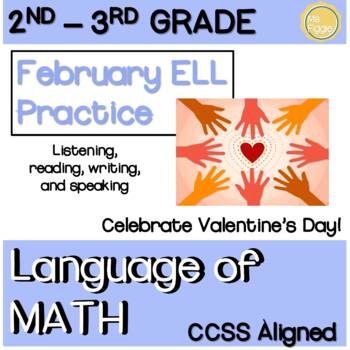FEBRUARY 2nd – 3rd Grade ELL Practice
- PDF
Description
Celebrate Valentine's Day with this math-filled practice for 2nd and 3rd grade English Language Learners!
The February practice focuses on Valentine's Day. It incorporates the Language of Mathematics and Common Core State Standards for grades 2 and 3 so it can be used during a math unit as well as a language class.
How can I use this as a general ed classroom teacher?
This is a perfect set of activities to help students learn about the earth using plenty of helpful visuals. It can be used as a whole class activity, one-on-one work with a teacher, or even as a formative comprehension check.
How can I use this as a language specialist?
This set of activities would work as a formative language assessment, work to do while pushing in/pulling out, a language center activity. It can also be used as an ACCESS prep activity!
Included:
- Teacher script and instructions
- Student pages for
- Practice for all 4 domains of language (listening, reading, writing, and speaking)
- Differentiated versions for Tier A and Tiers B/C
As always, I hope this is helpful for you and your students.
Please let me know what you think, all feedback is appreciated!


